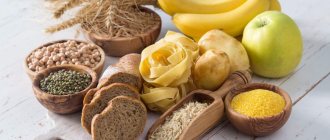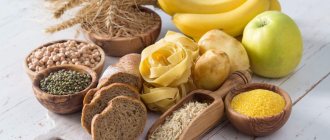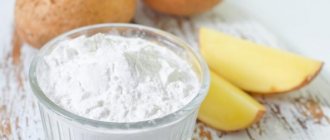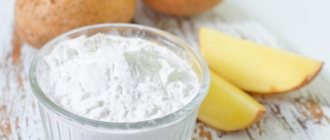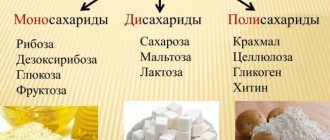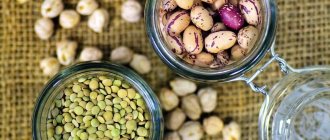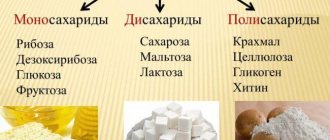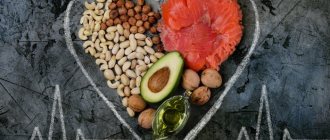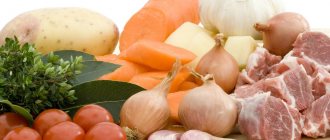Having chosen a low-carb keto diet for yourself, the first thing you need to understand is the role, features of action and influence of carbohydrates on the body! After all, the ketogenic principle of nutrition is based on the principle of reducing carbohydrate foods in the diet, as well as choosing the type of carbohydrates consumed.
Basic concept! The ketogenic diet is a popular weight loss tool used by athletes, people with metabolic disorders and certain diseases, fitness people and many who want to keep their body in shape.[1]
Low carbohydrate nutrition and its principles
By consuming food, a person obtains proteins, fats, and carbohydrates in a certain amount. The balance of these energy sources largely determines weight gain, keeping fit, and some health parameters. The keto diet involves a significant reduction in carbohydrates in the diet in order to reformat the principle of metabolism. With a ketogenic diet, the body obtains energy by breaking down fats. To achieve the goal, the body is introduced into ketosis - a state in which ketone bodies are actively produced.
Important! Ketones or ketone bodies are a metabolic group in the body. Ketone bodies are “fuel” for muscle tissue and kidneys. Under certain conditions, ketones are a source of energy for the brain.[2]
Increased production of ketone bodies in the body is provoked by intense physical activity, fasting, and reduced carbohydrate consumption. With ketogenic nutrition, a controlled state of ketosis is launched, aimed at correcting body weight.
100+ KETO foods: what you can and cannot eat
Keto ice cream: TOP 9 recipes
Keto Buns: 9 Low Carb Recipes
Keto broths: TOP 6 recipes
Maltose
“Malt sugar” is what the natural disaccharide maltose is often called.
Malt sugar is a product of the natural fermentation of malt contained in sprouted, dried and ground cereal crops (we are talking about rye, rice, oats, wheat and maize).
This sugar has a less cloying and sweet taste (unlike cane and beet sugar), due to which it is used in the food industry in the manufacture of:
- baby food;
- muesli;
- beer;
- confectionery products;
- dietary products (for example, cookies and crispbread);
- ice cream
In addition, it is maltose that is used in the production of molasses, which is an integral component of beer.
Maltose is not only an excellent source of energy, but also a substance that helps the body obtain B vitamins, fiber, amino acids, macro- and microelements.
This disaccharide can cause harm if it is consumed excessively.
What foods contain maltose?
Maltose is present in large quantities in sprouted grains.
In addition, small amounts of this carbohydrate are found in tomatoes, oranges, yeast, honey, molds, as well as in pollen, seeds and nectar of some plants.
Carbohydrates and their role in a ketogenic diet
What are carbohydrates? These are carbon hydrates - macroelements consumed with food and serving as a source of energy. Carbohydrates are simple and complex. They are also called fast and slow, depending on the speed of absorption.
As carbohydrates are digested, blood sugar rises. Due to the hormone (insulin) produced by the pancreas, glucose is absorbed by the body, converted into energy. In simple terms, carbohydrates can be called “fuel” for the body.
With a reduced carbohydrate intake, the body draws energy from proteins and fats.
Glycogen
Glycogen (this carbohydrate is also called “animal starch”) is the main form of glucose storage, and this kind of “conserved energy” can make up for glucose deficiency in a short period of time.
What is it about? Carbohydrates that enter the body with food, when passing through the digestive tract, are broken down into glucose and fructose, which provide human systems and organs with energy. But some of these monosaccharides enter the liver, depositing it in the form of glycogen.
Important!
It is glycogen, “preserved” in the liver, that has an important role in maintaining the concentration of glucose in the blood at the same level.
Important!
Glycogen concentrated in the liver is almost completely depleted 10 to 17 hours after eating, while the content of muscle glycogen decreases significantly only after prolonged and intense physical activity.
A decrease in glycogen concentration is signaled by a feeling of fatigue. As a result, the body begins to receive energy from fat or muscle, which is extremely undesirable for those who purposefully increase muscle mass.
Spent glycogen must be replenished within one to two hours, which will help avoid an imbalance between fats, carbohydrates, and proteins.
How many and what kind of carbohydrates are allowed on keto?
The basic principle of ketogenic nutrition is based on reducing the amount of carbohydrates consumed. For beginners, it is enough to gradually reduce the amount of carbohydrates consumed - less than 80.50 grams per day. With positive dynamics of well-being and health status during the ketogenic diet, the rate of consumed carbohydrates is reduced to 20-30 grams per day.
It is by reducing the amount of carbohydrates that the process of ketosis is launched, which helps to lose extra pounds. However, the incorrect inclusion of even small amounts of carbohydrates in the diet can bring the body out of ketosis, thereby delaying the desired result.
On a keto diet, it is recommended to include a small amount of complex (slow) carbohydrates in your diet. Fast carbohydrates provoke increased insulin production. A number of quickly digestible carbohydrates can disrupt the process of ketosis.
How to count carbs on keto
To correctly count carbohydrates on a keto diet, you need to rely on the given balance of BJU.
In the keto diet, 70-90% is allocated to fats, 8-20% to proteins, and 2-10% remains for carbohydrates.
Having determined the appropriate ratio for yourself, it is important to clearly fit the amount of carbohydrates consumed within the specified framework. All digestible carbohydrates will have to be taken into account. Low carbohydrate foods cannot be ignored. After all, despite the fact that there are too few of them (carbohydrates), they are absorbed, they exist, they have an effect on metabolism.
For example, you decide to eat a 120 gram cucumber (3.6 grams of carbs) with a piece of fatty pork and 150 grams of keto spaghetti squash (8.7 grams of carbs). Is it possible to omit the carbohydrates present in cucumber and not count them? Not worth it. You won't be able to deceive your body. Therefore, it is better to be honest with yourself.
It is important to remember that there is no ideal KBJU formula suitable for everyone. The general average standards developed for the ketogenic diet can and should be adjusted to suit yourself. Taking into account your own physiological characteristics, lifestyle, health status and other details, you need to choose an individual KBJU macro that will allow you to lose weight and stay in good health. What does it mean? This means that, having adopted a standard of 20-30 grams of carbohydrates per day, it is not necessary to strictly follow it if there is a deterioration in health, etc. You can and should add carbohydrates when the standard option is not suitable. After adaptation, you can reduce the amount of carbohydrates you consume by carefully monitoring how you feel.
How to count correctly
Carbohydrates play a major role on the keto diet, so they need to be taken into account and counted correctly. In modern realities, this is not difficult to do. BJU per 100 grams is indicated on almost all product packaging. The Internet is full of tables and calculators that allow you to calculate carbohydrates in simple foods, as well as in complex dishes, without much hassle. Yes! It is also necessary to take into account carbohydrates consumed as part of complex dishes, just as it is necessary to take into account the balance of carbohydrates eaten with individual foods. For example, when baking a keto cake, you should strictly follow the recipe with calculated BJU. Or, you will have to weigh all the products included in the recipe on a food scale in order to enter the indicators into the online calorie calculator panel and calculate the BJU for the entire dessert. This will make it easy and simple to calculate the amount of carbohydrates, proteins and fats in a single serving.
What are net carbs
Net carbs are completely digestible carbs! These carbohydrates are found in foods without fiber. The fact is that fiber also contains carbohydrates, but these carbohydrates are not digested. Fiber from whole foods is not digested by the body, so carbohydrates remain unprocessed.
Experts think! Dietary fiber is the indigestible part of plant material, containing part soluble and part insoluble fiber. Insoluble fiber remains unchanged as it passes through the gastrointestinal tract.[6]
In many tables and on the packaging of some products, the amount of total and net carbohydrates is often written. For example, cauliflower contains 5 grams of carbohydrates per 100 grams, 2 grams of which are fiber. This means 5-2 = 3 grams of digestible carbohydrates. You can take into account exactly these 3 grams (and not 5), because the body will not absorb 2 grams, which are “sealed” in dietary fiber.
However! It is recommended to subtract carbohydrates from fiber only from whole foods. If we are talking about processed foods, then some of the carbohydrates that come from dietary fiber and sugar alcohols (sweeteners) can be absorbed.
Of course, a lot depends on the chosen approach. Some people follow strict keto rules. And, someone chooses a “light” approach for themselves. If it works and does not cause a negative reaction from the body, then why not?
TOP 9: Lowest carb alcohol
What is Psyllium: why is it needed and how to use it
The Best Nuts for the Keto Diet
The whole truth about milk on the keto diet
Net Carbs on Keto (Chart)
A keto diet food list with net carb counts is a handy tool that will help you choose your menu with ease.
| The product's name | Amount of net carbs per 100 grams | The product's name | Amount of net carbs per 100 grams |
| By-products (liver, heart) | 3 | Coconut flour | 3,2 |
| Shrimps | 1,4 | Almond flour | 2,2 |
| Chicken eggs | 0,7 | Flaxseed flour | 0,6 |
| Heavy cream (33%) | 1,7 | Psyllium | 1,4 |
| Cheese | 0,4 | bitter chocolate | 5,7 |
| Asparagus | 2,7 | Dry red wine | 6 |
| Green beans | 6,4 | Dry white wine | 6 |
| Cucumber | 2,2 | Erythritol | 0,5 |
| White cabbage | 5 | Stevia | 0 |
| Strawberry | 4,7 | Olives | 0.2 |
| Avocado | 3,7 | Eggplant | 3.5 |
| Raspberries | 3,3 | Broccoli | 6.1 |
| Almond | 2,7 | Tomatoes | 4.8 |
| Pistachios | 4,9 | Spinach | 1.2 |
| Pumpkin seeds | 1,3 | Pumpkin | 9 |
| Chia seeds | 1,4 | Garlic | 0.9 |
| Coconut milk | 1,6 | Onion | 2.2 |
| Almond milk | 0,3 |
Rules for losing weight
Foods rich in fiber are slowly absorbed by the body, therefore, from the point of view of nutritionists, they are the most useful for losing weight. The most correct thing would be to eat vegetables, herbs, legumes and dishes from various cereals.
- If you wish, you can add nuts to the menu; eating sunflower seeds, white cabbage and sour apples has a good effect.
- The body's need for pectin can be fully met by apricots, cranberries and fresh cucumbers; it is quite acceptable to consume pasta, buckwheat and rice.
- Nutrition during the diet should be complete and properly balanced.
In addition, you should definitely take into account physical activity so as not to feel lethargic and not overeat.
Does fiber affect insulin?
Fiber slows down the process of carbohydrate absorption. By containing or artificially adding dietary fiber to food, you can make the glycemic profile calmer. Those. the increase in blood sugar will not be sharp. This means that insulin will also be produced in a healthy, calm manner. No wonder fiber is valued in diabetic nutrition.
Dietary fiber and high-fiber foods help avoid blood sugar spikes. For people prone to uncontrolled weight gain, fiber is useful in preventing the development of insulin resistance.
Fiber can be consumed in vegetables, grains, and nuts. Also, the modern grocery market offers separately prepared dietary fiber (apple fiber, flax fiber, etc.) for adding to food.
Experts speak! Fiber is a product that is recommended, in one form or another, to be included in the diet of children and adults. Children need 20-25 grams of fiber, adults 30-35 grams of dietary fiber per day.[7]
Sucrose (sugar)
Sucrose is a well-known white sugar that is called an “empty carbohydrate” because it does not contain nutrients such as vitamins and minerals.
Today, discussions continue regarding the benefits and harms of this disaccharide. Let's try to understand this issue.
The benefits of sugar
- Ensuring normal brain function.
- Increased performance.
- Uplifting mood, which is important in modern life full of stress.
- Providing the body with energy (sugar is quickly broken down in the gastrointestinal tract into glucose and fructose, which are absorbed into the blood).
In turn, a deficiency of sugar in the body can cause irritation, dizziness and severe headaches.
The harm of sugar
- Metabolic disorders, which leads to the development of obesity and diabetes.
- Destruction of tooth enamel.
- Displacement of B vitamins from the blood, which can provoke sclerosis, heart attack and vascular diseases.
- Disruption of the musculoskeletal system.
- Brittle hair and nails.
- The appearance of acne and allergic rashes.
In addition, excessive love for sweets in children often develops into neuroses and causes hyperactivity.
What to do? Quit sugar completely? But the benefits of this carbohydrate are undeniable. There is a way out - and this is moderation in the use of this product.
During the research, the optimal daily intake of sugar was determined, which for an adult was 50–60 g, which corresponds to 10 teaspoons.
BUT!
The “norm” refers to both pure sugar and sugar contained in vegetables, fruits, juices, confectionery and other products that contain this carbohydrate. Therefore, you should consume sugar responsibly and carefully.
Important!
There is an alternative to white sugar - and this is brown sugar, which does not undergo any additional purification after separation from the raw materials (such sugar is also called unrefined). The calorie content of brown sugar is lower, while the biological value is higher. However, we should not forget that the difference between refined and unrefined sugar is not very large, so the consumption of both types should be moderate.
What foods contain sucrose?
Natural sources of sucrose in its pure form are sugar beets and sugar cane.
In addition, sucrose is present in sweet fruits, fruits, as well as berries and vegetables.
Products that do not contain carbohydrates (list)
A number of products actually do not contain carbohydrates. These products consist of protein and fat components. Of course, carbohydrate-free foods are, in a sense, a godsend for ketogenic nutrition. After all, with the help of these ingredients it is even easier to reduce the balance of consumed nutrients in favor of fats, without leaving you hungry.
- mutton;
- veal;
- beef;
- pork;
- liver;
- duck;
- goose;
- shellfish;
- salo.
Some spices and unsweetened or non-carbohydrate-sweetened drinks do not contain carbohydrates.

